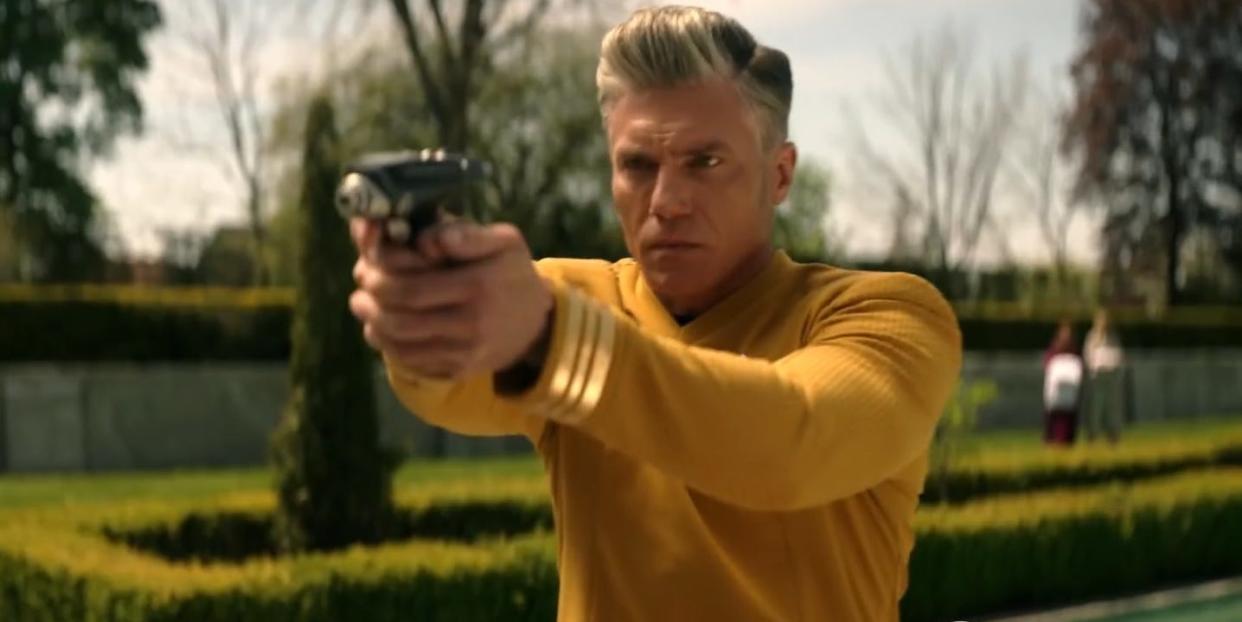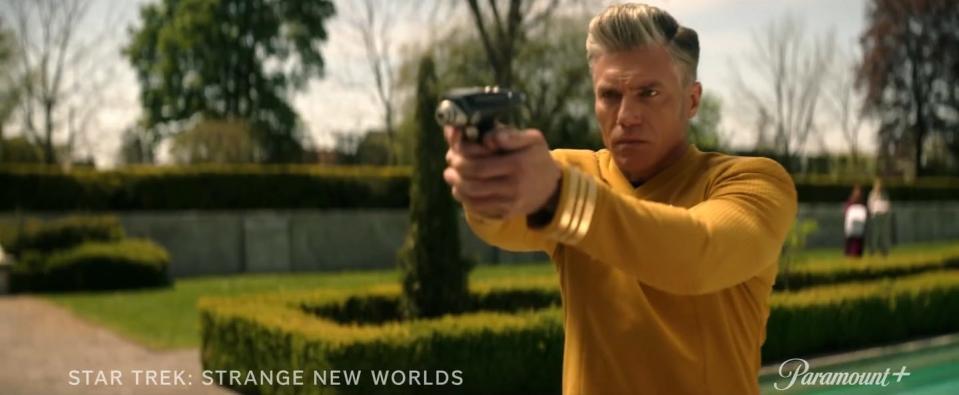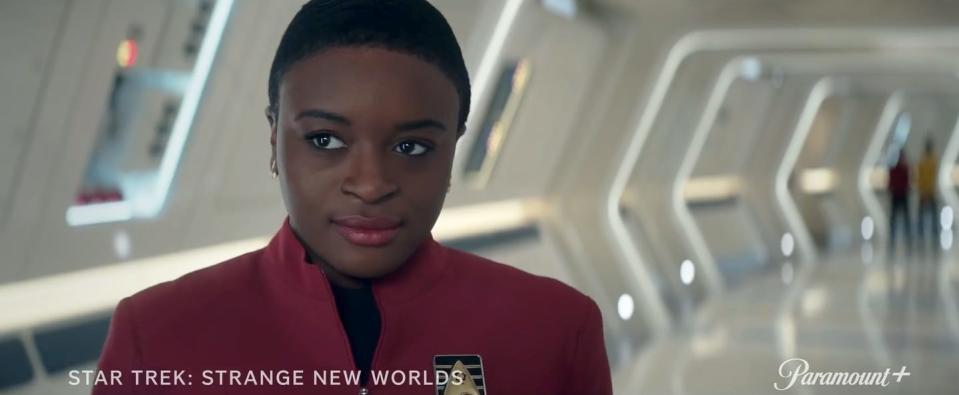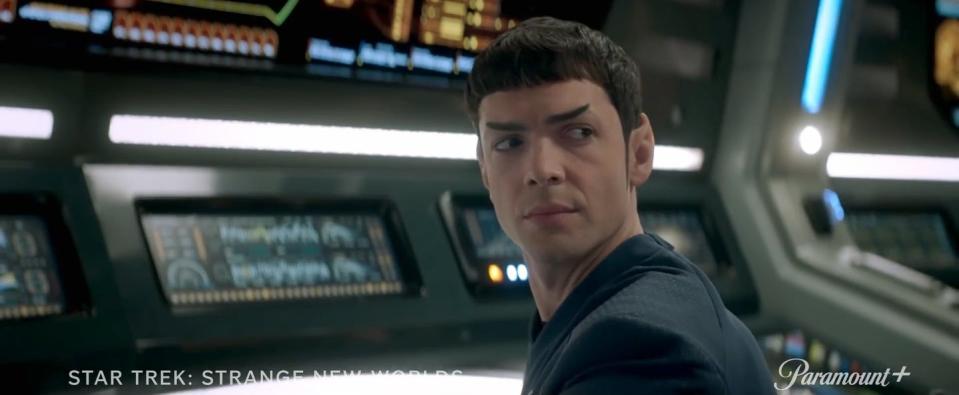'Star Trek: Strange New Worlds' May Have Just Made a Big Mistake

- Oops!Something went wrong.Please try again later.
"Hearst Magazines and Yahoo may earn commission or revenue on some items through the links below."
Star Trek: Strange New Worlds spoilers won't be found here.
With Star Trek: Strange New Worlds as its latest headline act, the Star Trek franchise is finding itself in an unprecedented period of expansion. After its debut in early May, Strange New Worlds became the fifth ongoing Star Trek series, alongside two other live-action series and two animated series.
Whether it's adult comedy with Star Trek: Lower Decks, or self-contained, season-long stories with Star Trek: Picard, each of these four other series have been notable for their willingness to push Star Trek into new, fresh territory. However, anyone who has caught a glimpse of Strange New Worlds, or even seen any of the fervent online discussion about the show, will know that Star Trek's newest outing is taking a very different approach.
Rather than pressing forward like the rest of this new wave, Strange New Worlds is unashamedly a throwback to the era when Star Trek was dedicated to telling the story of the USS Enterprise and its crew as it travelled through the galaxy, exploring the vastness of space unseen. It's also an episodic series, with each weekly adventure telling a single standalone science fiction story. But hasn't all this been done before?

Though it never had the breadth of popularity that Star Trek: The Next Generation enjoyed, Star Trek: Deep Space Nine is retrospectively regarded as some of the best Star Trek on offer.
The show wasn't set on a utopian cruise liner like the Enterprise-D, but a grimy, dark space station, still carrying the baggage of a brutal history. As it progressed into its later seasons, Deep Space Nine became a series about war, and as it did so, it began to step away from the episodic format that had defined Star Trek up until that point.
But the franchise was beginning to sag under the weight of its own longevity, and Star Trek's first revival era ended without fanfare. Enterprise was cancelled prematurely after its fourth season, ending almost two decades of Star Trek's constant presence on TV screens. It was only in 2017, after the modest success of the rebooted TOS-era films starring Chris Pine as Kirk, that it was deemed the right time for Star Trek to return to TV.
Star Trek: Discovery marked a new era. It promised to be a Star Trek series that would satiate the appetite and sensibilities of modern audiences, with inspiration from its internationally renowned name tag. Not long after Discovery's debut, Patrick Stewart announced that he would be reprising the role of Jean-Luc Picard and so Star Trek: Picard was born.
Both new live-action shows adopted the darker stories and serialisation of Deep Space Nine and expanded them. In doing so, the format and style of both series became almost unrecognisable next to The Original Series and The Next Generation, despite being direct prequels and sequels respectively. Both series have also had their detractors, but with rumours of a Section 31 spin-off series and others, it looked like Star Trek’s new direction was set in stone.
Now, in the midst of its second wave of resurgence, Star Trek is changing course again. Star Trek: Strange New Worlds marks the return of live-action Star Trek to an episodic format, set on a starship, focusing on the adventures and exploits of a large ensemble cast. Reviews for the series have put the supposed "return of classic Star Trek" front and centre — and a fractured online community has received the first round of episodes with surprising harmony.

Aesthetically and thematically, the series is light and bright and marks a stark contrast to Discovery, where the titular ship seems to be perpetually shrouded in darkness. It's also peppered with moments of genuine comedy, and, perhaps most significantly, it portrays an aspirational view of humanity's future. Like The Next Generation, the USS Enterprise of Strange New Worlds might just be a place that you end up fantasising about living on.
But storytelling thrives when it innovates, and interest in Star Trek has fizzled out in the past when the franchise appeared to be running out of steam. Despite its charm, Strange New Worlds isn't an innovation, and its premise certainly isn't new.
It's firmly grounded in the tradition of Star Trek's classic series, and the last time the franchise went backwards rather than forwards, it resulted in a hiatus lasting over a decade. On the surface, with a host of recast legacy characters like Uhura, Samuel Kirk, and Robert April — not to mention the main trio — Strange New Worlds could sound like a death knell.
And yet somehow, it isn't.
With their new take on the franchise's universe, Discovery and Picard have created space for Strange New Worlds to return to the beloved style of Star Trek's past. The past five years of the franchise's history have been filled with a new kind of Star Trek, dramatically different to the series of decades ago. Without their change of style, tone and pace, Strange New Worlds would undoubtedly be a backwards step, and risk being perceived as a predictable repeat of what had come before.
Instead, thanks to Discovery and Picard, the classic format embraced by Strange New Worlds feels fresh, full of life and brimming with energy. This energy feeds on the strength of the series' magnetic characters and the updated production design which brings episodic Star Trek firmly into the 21st century.
These all work in conjunction to prevent the series from feeling like a retread — even when the plot of some episodes strikes a familiar tune. Now, with a spark of new life, Star Trek boasts a renewed durability.
Though it's still in its early stages, the success of Strange New Worlds means that the future of Star Trek is more open than ever before. The franchise is able to press on with the format of its newer series, as Discovery continues on to its fifth season and Picard concludes with its third.

Sometimes, in trying to breathe new life into a long-running franchise, it's possible to lose what made it special in the first place. When they've ended, Discovery and Picard might not be able to claim the same legacy as Star Trek's first two series. But regardless, they've created a viable bridge to those series that Strange New Worlds can now follow.
In its most iconic form, Star Trek is a vehicle for short science fiction stories about morality, humanity and self-discovery. Strange New Worlds has managed to recapture this quintessential nature and simultaneously feel like something new. For a franchise that began in 1966, that surely counts as a minor miracle.
Star Trek: Strange New Worlds premiered on May 5 in the US, streaming on Paramount+. It will premiere in the UK with the launch of Paramount+ on June 22.
You Might Also Like

